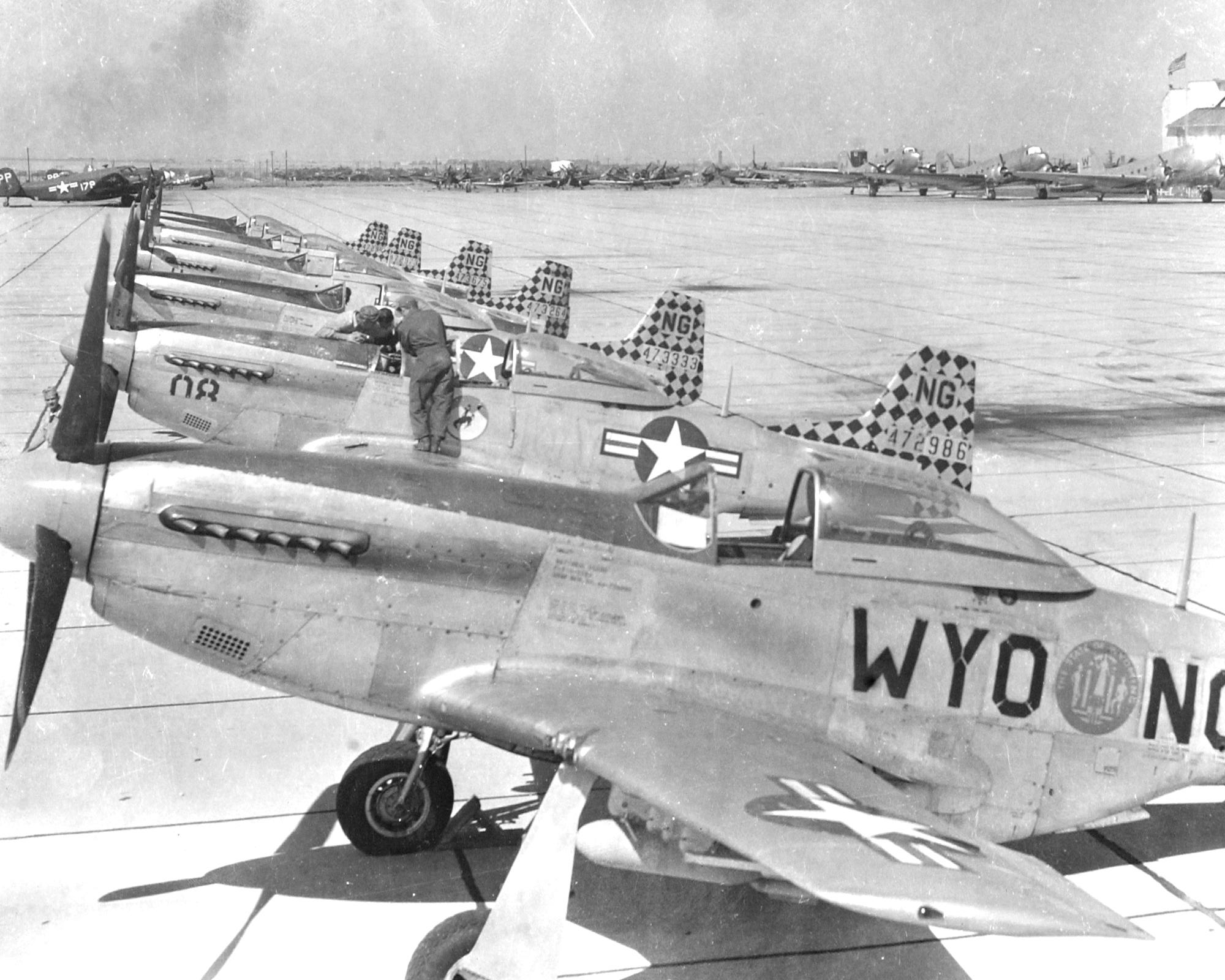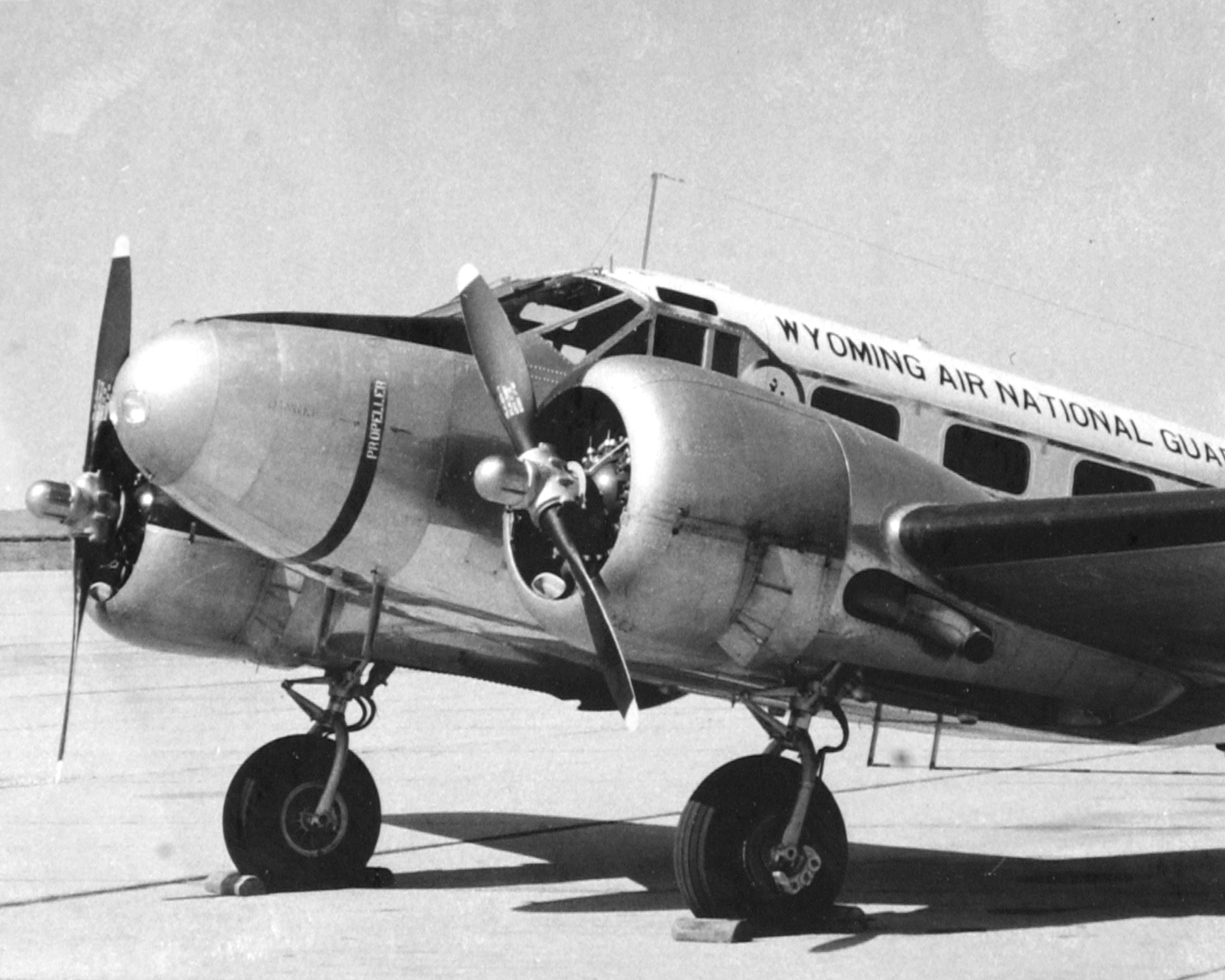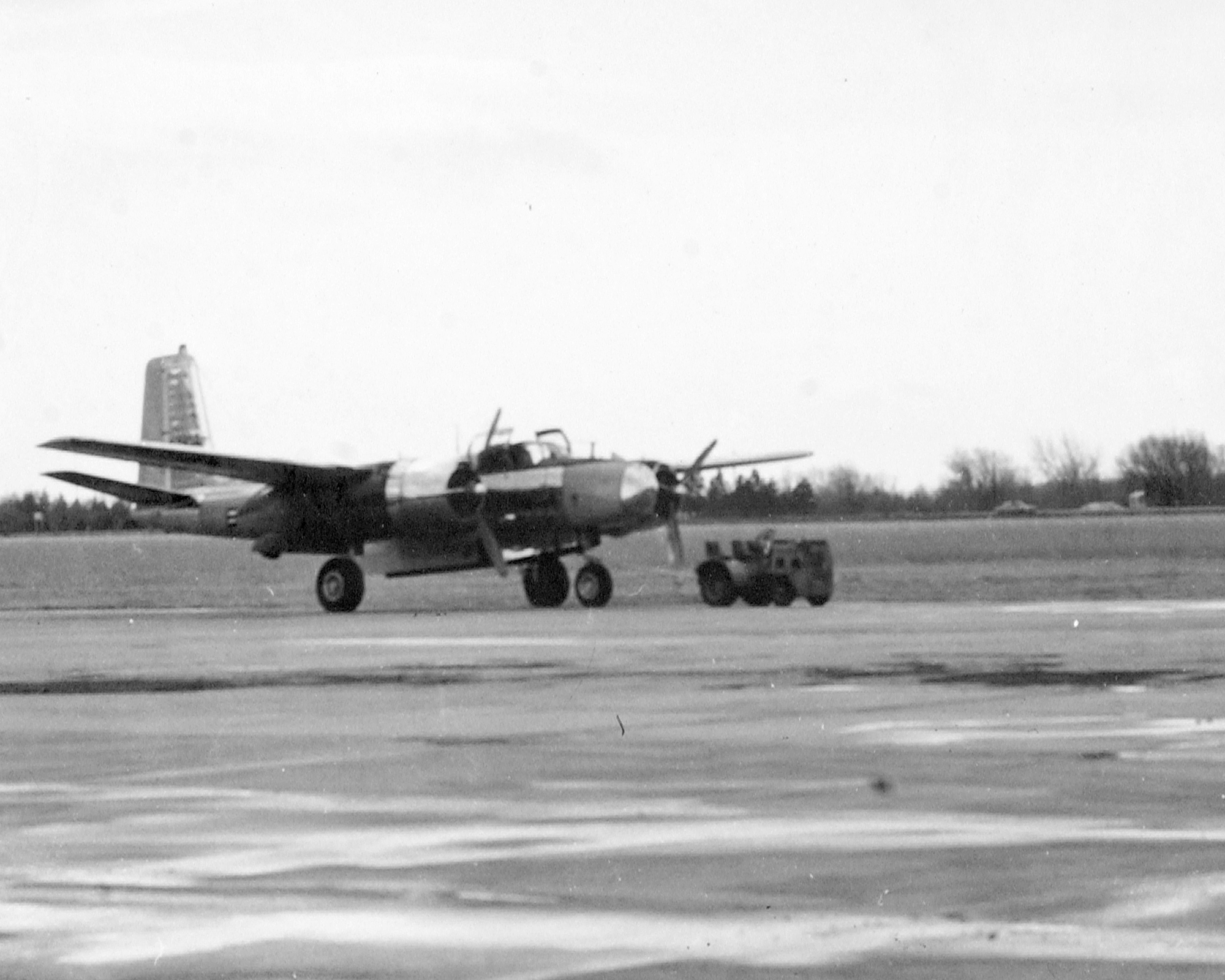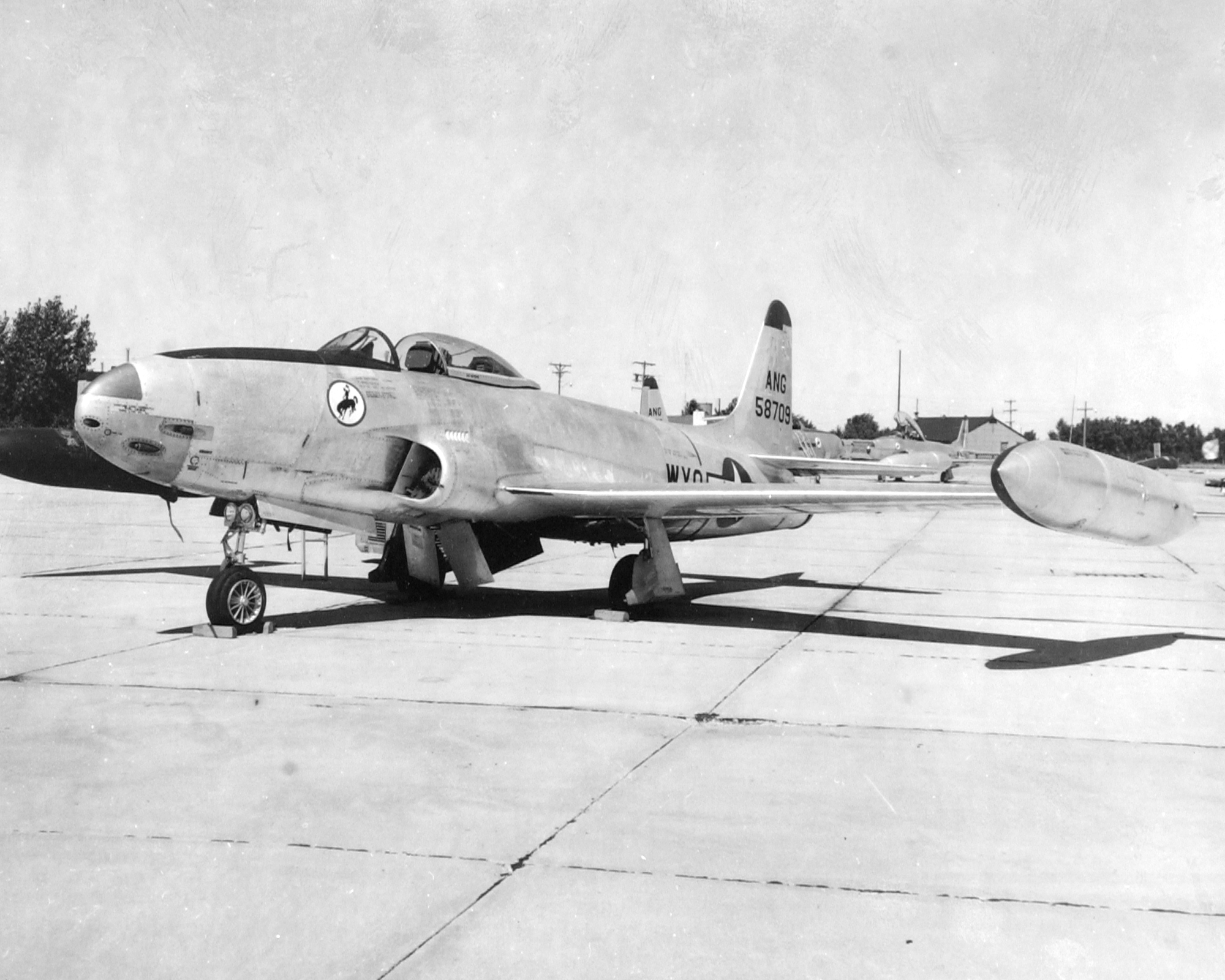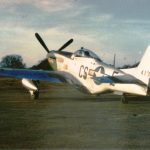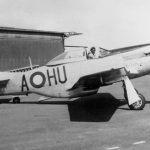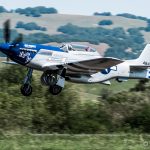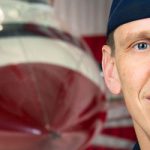Story by Staff Sgt. Daniel Molineaux
CHEYENNE, Wyo. – During World War II, throughout every region involved with the conflict, the importance of air superiority became apparent to allied and axis commanders alike. This realization would lead to a major reorganization of the armed forces in the United States, and the Wyoming National Guard was at the forefront of this fundamental shift.Before the founding of the U.S. Air Force in 1947, Wyoming was already putting into the works a small group of men, many of them veterans of the preceding war, who would form the roots of the WyNG that exists to this day. First organized in a small hangar on the southwest side of Cheyenne Municipal Airport on 10 August 1946, these early guard members would begin drilling even before the first aircraft arrived.
The 187th Fighter Squadron was equipped with P-51 Mustang fighters which began arriving in November 1946. Originally classified as the P-51 Mustang, the USAF Strategic Air Command re-designated the aircraft F-51 in 1948.By mid-1947 the number of personnel and aircraft assigned to the unit had vastly increased, however, no field training was held during the year due to a shortage of vitally needed equipment.By 1948 the unit was operating with a full complement of aircraft and pilots. Enlisted ranks were also increasing. The first field training exercise was held in August 1948 at the Cheyenne location. Five squadrons, including the Wyoming unit, attended field training in Casper, Wyoming, in 1949.
Intensive gunnery and bombing training was run at the Split Rock range near Casper. In 1950, the unit saw full training operations in Grayling, Michigan.Present at this training was 1st Lt. Robert Rock, a veteran of World War II, and Cheyenne resident. He remembers the Mustang pilots as being a great bunch of men and “the rowdiest, wildest bunch of guys I ever knew.” Although Rock never had the opportunity to deploy with the pilots to Korea, he spent several years working and training with the group in Cheyenne and on their annual summer training missions. He also remembers fondly a practice put into place by his superiors who wanted to demonstrate to local businesses the importance of the guard to the business community.“The Guard at that time wanted to be better known in the community because most of our activities were not well publicized,” Rock said. “So our commanding officer took to paying us in $2 bills each month. When we spread them around town, people began to take notice.”
This practice continued for many years, with business owners quickly coming to understand the importance of the guard to the local economy through the use of the unique denomination.The Mustangs would stand as the primary aircraft from the beginning of the Wyoming Air National Guard from the earliest days until being replaced by the C-45 Expeditor in 1953. During its usage in the guard, the plane was enjoyed and appreciated by the founding members of the unit.“It had a very distinct sound, which I loved,” remembered Rock. “I could always pick one out of other aircraft noises since it sounded so throaty and harmonious. Its profile was also unique, the plane could always be identified among aircraft.”
The early flyers of the WyANG would serve with distinction with their Mustangs in the Korean War, but pay a high price for their service. On the final day of their annual training in 1950, the Korean War would officially begin, with the unit being called to active service on April 1, 1951.Midway through that year, pilots of the unit were ordered to Southwest Asia. Eighteen pilots flew over 1,500 combat missions and eight were killed in action. Airmen of the unit served in Korea and all corners of the globe. Late in 1951, the unit was moved to Clovis Air Force Base, Clovis, N.M. The unit was released from active duty on January 1, 1953.“I still feel sad about all those guys” Rock said, referring to the high pilot loss during that war. “Such fine young men, they never had the chance to grow old.”
Making the ultimate sacrifice for their country, and laying the foundation for decades to come, the early guard members of the Wyoming Air Guard stand as heroes for the current generation to revere. Integrity first, service before self and excellence in all we do are the U.S. Air Force values, as well as playing a key role in the local community, were the foundations and the missions of the founders of the air guard. They were shining examples of how the guard works today, serving in its local and global community.
Thisarticle, Mustangs and $2 bills, by SSG Daniel Molineaux, identified by DVIDS, is free of known copyright restrictions under U.S. copyright law.







